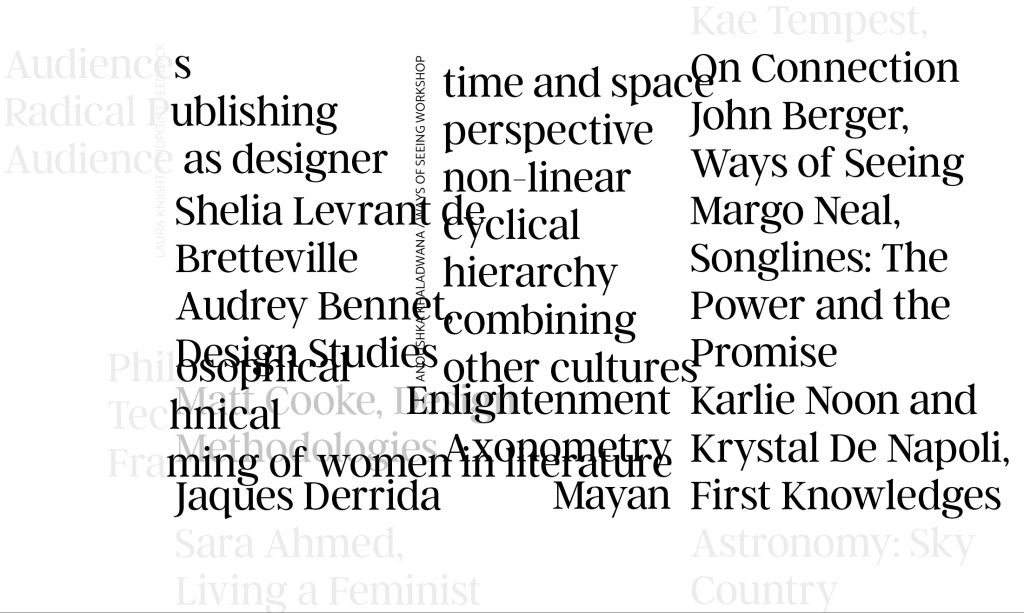UNIT 2: BRIEF 4: POSITIONS THROUGH DIALOGUE: Written Response

I continued my written response as another article in the magazine I had been building through my written responses in Unit 2. I wanted the essay to visually demonstrate a conversation, or dialogue. I wanted to explore non-linear narratives and experimental design (in response to my findings at the end of Positions through Contextualising), whilst still maintaining a connection to what came before. I used the same template and grid, fonts and styling as I had previously, but created a gatefold page that would fold out of the ‘magazine’ structure. The landscape structure hinting at other cultures (Axonometry), it also folds round onto itself as the start is the same as the end, a circular narrative, that is reflective of my work always seemingly working in cycles. I experimented with alternative fonts within the copy to enhance and amplify the content and challenge my personal bias and way of working.
There were five lines running through the middle (inspired by VAS: An Opera in Flatland, Tomasula, 2002) and each strand of conversation had its own line that it hung from or sat on. This is also indicative visually, and reflective of, a music stave (music and tempo being another influence). The paragraphs start to introduce a rhythm to the writing, that visually reflect sound levels on a monitor, but also drew my attention to the formatting of the writing, that starts off almost as a beat (the bass line of narrative running through the piece), then when it gets chaotic (emotional?) becomes a more stream of conscious (a longer paragraph), like the cresendo in a piece of music, or more relatively, a rap that increases in speed and number of words as it peaks.
Through writing as a dialogue, I brought the practitioners into conversation with each other, even though they were isolated conversations. This helped me progress my practice, which I realised was a conflicting conversation in my own head. Through the interviews, the writing and design, I came to realise the internal conflict of being one thing, or the other, was redundant and that by bringing that tension into my work, each can inform and progress the other. Even though it’s uncomfortable and often confusing, or doesn’t make immediate sense.
I had many underlying themes and references I wanted to explore, that made my practice overwhelming, confusing and difficult. I put all of that information as overlapping words in ‘picture box’ structures, with greyed out text for words that didn’t fit the neat rectangle. This is partly to show the confusion and chaos, but also to highlight what is lost through the cropping of imagery; and to use words as images, beginning to explore that relationship and hierarchy, if only in a small and unvigorous way.
